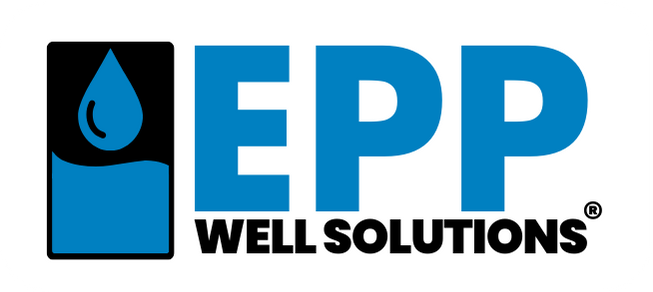What Are Water Aquifers?
Deep beneath the surface, beyond the reach of sunlight, lies a vital resource that sustains millions of wells worldwide: aquifers. These underground formations hold and channel water through layers of rock, sand, or gravel, quietly powering homes, farms, and communities. For anyone relying on a well, aquifers are the unsung heroes—or sometimes the silent culprits—behind the flow of water. But not every aquifer performs the same way. Some deliver a steady stream, while others falter, leaving property owners to grapple with shortages. Understanding what aquifers are and how they vary in quality is the first step to managing your water supply effectively.
An aquifer is a natural reservoir of groundwater, formed when water seeps into permeable materials like sandstone or loose gravel. It’s where wells draw their lifeblood, but the amount and ease of that water depend on the aquifer’s makeup and conditions. A “good” aquifer can make life easy, while a “bad” one turns it into a challenge.
Defining Aquifers: The Basics
At its essence, an aquifer is a layer of earth that traps and transmits water. Rain, snowmelt, or runoff percolates through soil, filling the pores or fractures in materials like rock or sediment. The water table marks the boundary where this saturated zone begins, fluctuating with weather and usage. Aquifers split into two types: unconfined, which recharge directly from the surface, and confined, locked between impermeable barriers like clay, holding water under pressure. Unconfined aquifers react quickly to rain but dry out in droughts, while confined ones refill slowly, sometimes feeding artesian wells where water rises on its own. Regardless of type, an aquifer’s role is to store and supply groundwater—though how well it does that varies.
The amount of water an aquifer provides hinges on its size, the material it’s made of, and how fast it recharges. Coarse, porous layers let water flow freely, while tight, fine-grained ones hold it back. Some stretch across regions, others sit in small pockets, but all are shaped by geology and climate. For well owners, this means the difference between a faucet that runs strong and one that sputters is often determined by the aquifer below.
Good vs. Bad Aquifers: The Divide
What sets a good aquifer apart from a bad one? It’s a mix of capacity, flow, and renewal. A good aquifer is a workhorse—packed with water and built to share it. Think sand or gravel with wide-open spaces, letting water move smoothly to a well. High permeability ensures a robust yield, often several gallons per minute, enough for a household or more. Recharge keeps pace too, fueled by steady rain or nearby streams, so the supply rarely dips. These aquifers thrive in wet areas with the right geology, making wells a breeze to rely on.
A bad aquifer, by contrast, is a bottleneck. It might hold water, but it’s stingy—made of fine silt or clay with pores so small that flow slows to a crawl. Low permeability can mean less than a gallon per minute, far below what’s practical. Recharge lags, especially if it’s deep, confined, or cut off from surface water, and droughts hit it hard. Over-pumping compounds the issue, draining it faster than it refills and dropping water levels over time. In some cases, the water’s even tainted—salty or mineral-heavy—making it a chore to use. Bad aquifers often lurk in dry zones or under tight rock, leaving wells—and owners—stranded.
The stakes are real. A good aquifer keeps life flowing; a bad one breeds uncertainty—will there be enough water today or next week? Traditional fixes often stumble here, unable to crack a bad aquifer’s limits.
Common Fixes That Don’t Cut It
When a bad aquifer drags a well down, people reach for solutions. Drilling deeper aims to chase more water, but if the aquifer’s tapped out or doesn’t reach further, it’s a costly dead end. Cleaning the well might clear sediment, but it’s no fix for an aquifer that’s naturally slow or low. A bigger pump seems logical—more power, more pull—but it can over-pump, stressing the aquifer and cutting yield further. Drilling a new well elsewhere is a gamble; in a tough region, you might just hit another dud, with the expense and hassle to match. These moves tackle symptoms, not the core problem of a bad aquifer’s constraints.
The Well Harvester: A Game-Changer for Bad Aquifers
That’s where the Well Harvester comes in—a lifeline for wells stuck on bad aquifers. Unlike fixes that demand more than an aquifer can give, this system works with what’s available, turning a trickle into a triumph. It’s built to manage water wisely, protecting the well while meeting your needs.
The Well Harvester tracks water levels, pulling only what’s sustainable and pausing before over-pumping damages the aquifer. It harvests water whenever it can, storing it in a sizable tank so even a slow flow builds up over time. A booster pump keeps pressure steady, and periodic adjustments adapt to changing seasons, ensuring efficiency. It’s user-friendly too—a touchscreen shows tank levels and usage, while hands-free operation cuts upkeep. With a 3-year warranty, it’s a dependable answer for a tough situation.
For a bad aquifer—low yield, slow recharge, or both—the Well Harvester flips the script. It doesn’t force miracles; it optimizes reality, making even a weak source workable. No more betting on risky fixes—just consistent water from a system that fits the challenge.
Aquifers are the earth’s groundwater keepers, stashing water in layers of rock and sediment. Good ones flow freely, recharging fast and fueling wells with ease, while bad ones—tight, slow, or sparse—leave owners scrambling. Standard fixes like deeper drilling or bigger pumps often falter against a bad aquifer’s limits. The Well Harvester offers a smarter way, turning a struggling aquifer into a steady supply. Wondering if it could help your well? Visit eppwellsolutions.com—your water woes might have met their match.



